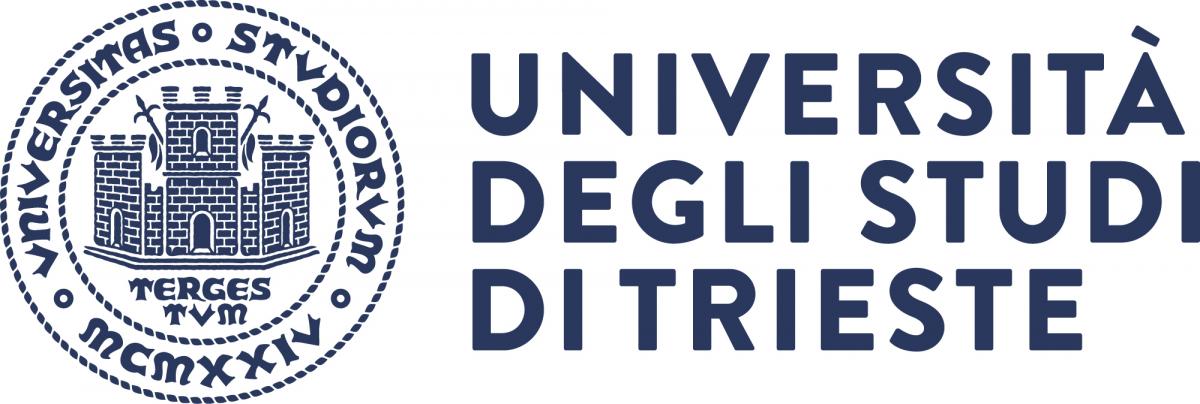The research programme coordinated by Mauro Tretiach focuses on both fundamental and applied aspects of lichen biology. Much of the research activities is carried out with a young and motivated research team that has been built up over the last few years. Currently (September 2022), the group includes three permanent researchers (M.T., L.M., F.C.C.), two post-doctoral researchers, four PhD students, plus master thesis students; another PhD student will join the group soon (November 2022).
The group studies the diversity of lichen symbionts, how lichen symbiosis functions in response to environmental stressors, and analyses the information these organisms can provide about the environment, by combining molecular, ecophysiological and “omics” approaches. We also study the ecotoxicology of two-dimensional (2D) nanomaterials.
The research activities are divided into four main areas, as follows:
Lichen cell biology

Lichens are poikilohydric, desiccation-tolerant organisms able to withstand frequent dehydration-rehydration cycles thanks to structural and biochemical changes/modifications in the cytoplasm and an efficient pool of antioxidant molecules. We co-culture lichen mycobionts and photobionts, optionally lichenized and rock inhabiting fungi and melanized fungi previously isolated individually under different controlled conditions. This allows us to study (i) their desiccation tolerance at the cellular and molecular levels, (ii) the molecular signals that are up- or down-regulated in the different fungal-algae associations and (iii) in the initial stages of lichenization, when a lichen symbiosis is newly establishing in vitro.
Microscopy techniques are used to study the changes/modification in cellular structures, biochemical analyses are performed to identify the metabolites involved, whereas transcriptomic analyses are performed to understand the key molecular processes involved, with special emphasis on the photobionts. Part of these researches are carried out in collaboration with the research groups of Prof. Ilse Kranner (University of Innsbruck, UIBK) and Prof. Alberto Pallavicini (DSV).
[ref.: Dr.ssa Lucia Muggia; Dr. Fabio Candotto Carniel; Prof. Mauro Tretiach; Dr.ssa Agnese Cometto; Dr. Enrico Boccato]
Biomonitoring of persistent airborne pollutants: from basic research to the (good) practice
Activities in this area can be divided into two types: basic research and applied services.
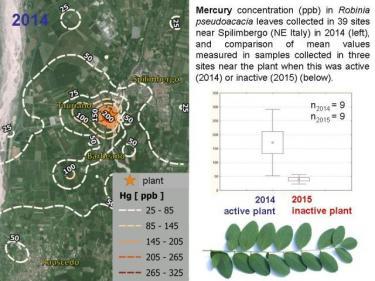
Basic research aims to improve the intrinsic quality and accuracy of biomonitoring protocols, being specifically planned to clarify some poorly known aspects of the physiology of lichen and mosses involved in the accumulation of airborne pollutants. Important contributions to improving the quality of biomonitoring surveys include (i) testing the predictability of air pollutants dispersion models using bioaccumulation data, (ii) assessing background levels of trace elements in the epiphytic lichen most commonly used in bioaccumulation surveys, i.e. Pseudevernia furfuracea, at national level, (iii) the implementation of the new protocols on the use of native and transplanted lichens as biomonitors of airborne trace elements published by the National Institute for Environmental Research and Protection (ISPRA), , in collaboration with the fellow members of the Biomonitoring working group of the Italian Lichen Society.
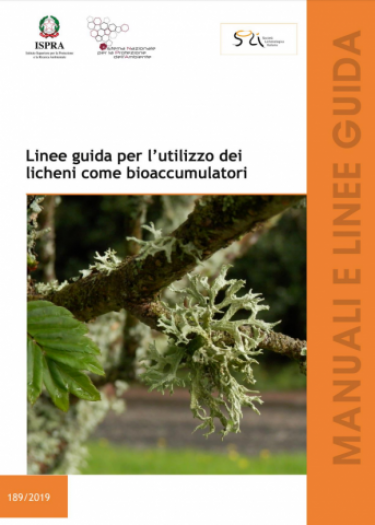
Biomonitoring services are generally carried out under the commitment of/contracted by local authorities, environmental agencies, and private companies and are an important source of funding for the research group. They consist of the application of standard protocols using lichens, mosses or vascular plants as bioindicators of air quality (being sensitive to SO2, NOx, H2S etc.), or as active and passive bioaccumulators of persistent airborne pollutants (e.g. heavy metals, PAHs, PCB etc.). Biomonitoring surveys have been carried out in the vicinity of industrial plants in the municipalities of Spilimbergo, Monfalcone and Fanna (NE Italy); several other surveys, including their planning, have been carried out for private companies (e.g. CESI spa, Milan; Sbe-Varvit spa, Monfalcone).
[ref.: Prof. Mauro Tretiach]
Molecular systematics of lichen mycobionts, photobionts and lichen-associated fungi
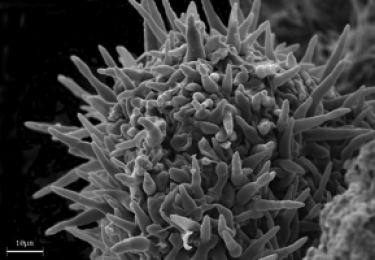
Morphological and phylogenetic species concepts have become complementary parts of lichen systematics and have been applied to resolve critical taxa and explain their phylogenetic affiliation. In our research, the genetic diversity and the phylogenetic placement of lichen symbionts and lichen-associated fungi (lichenicolous fungi) are examined by multiple nuclear, mitochondrial and plastidial markers. The taxa included in our studies represent endolithic, crustose, fruticose and sterile lichen species characterized either by low morphological diversity, high morphological and ecological polymorphism, and unknown phylogenetic relationships, or are fungi presenting different life styles.
Their taxonomy and systematics was confirmed by combining morphological and multilocus molecular data at diverse taxonomic ranking.
We have established collaborations with the research groups of Prof. Martin Grube (Graz, Austria), Prof. Mats Wedin (Stockholm, Sweden), Ass. Prof. Steven Leavitt (Utha, USA), and many other colleagues around the world.
[ref.: Prof.ssa Lucia Muggia; Prof. Mauro Tretiach; Dr.ssa Agnese Cometto]
Ecotoxicology of 2D-nanomaterials
Our research group is fully involved in one of the largest research projects ever funded by the European Union, the Horizon 2020 project GRAPHENE FLAGSHIP.As members of Work Package 4 “Health and Environment”, led by Prof. Maurizio Prato (DSCF, UniTS), we are currently testing the environmental toxicity of various graphene-related materials (GRMs). These nanomaterials are already present in a a wide range of everyday products. In particular, GRMs have attracted a great deal of interest over the past decade due to their exeptional physical and chemical properties. Given the large investments made, wide range of applications and increasing scale of production of GRMs, increased and/or uncontrolled release of these nanomaterials into the environment can be expected in the near future. However, the consequences for ecosystems are still unclear. After the initial studies on aero-terrestrial microalgae, conducted as part of CORE 1, in the following CORE 2 phase we investigated whether the aerial deposition of GRMs affect the sexual reproduction of seed plants. Initial work focused on the effects of GRMs on pollen performance in vitro (pollen germination rate and the pollen tube elongation, vitality and ROS production) of the entomophilous Tobacco plant (Nicotiana tabacum L.) and the anemophilous Common Hazel (Corylus avellana L.). More recently, we investigated in vivo the interactions of Few-Layer Graphene (FLG) and Graphene Oxide (GO) with the stigmatic surface in flowers of Cucurbita pepo L. (zucchini) and the effects of GRMs on the performance of the pollen deposited above. Recently, a new PRIN 2020 project started, with M.T. as national coordinator. It is titled “2D-Nano-Mad-Plants” and is dedicated to studying the interplay between the sexual structures of seed plants and four 2D-nanomaterials: Graphene Oxide, hexagonal Boron Nitride, Molibdenum disulphide, and Potassium Mica. This project is carried out in collaboration with the University of Bologna (Dr. Iris Aloisi, Prof. Francesca Ventura) and Udine (Dr. Guido Fellet). For more details, see at:
https://site.unibo.it/2d-nano-mad-plants-prin2020/en.
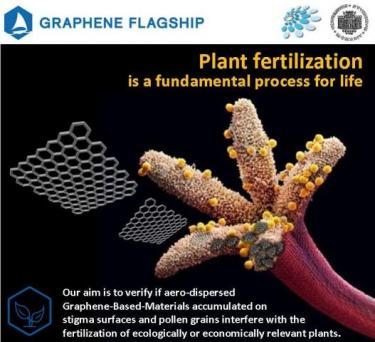
In a second line of research carried out during the CORE 2, we studied the environmental biodegradability profile of GRMs by primary decomposers, to predict accumulation in soil. FLG was exposed to living and devitalized axenic cultures of two white-rot and one soil fungi with or without lignin. This showed that all the tested fungi were capable of oxidizing FLG to a graphene oxide-like material, possibly the first step to complete conversion to CO2. In a second study, lignin peroxidase, the key enzyme of lignin degradation of one of these fungi (Phanerochaete chrysosporium Burdsall), was tested in-vitro to verify the biochemistry of GO degradation.
For Graphene Core 3 we are concluding a new research activity on freshwater algae. Currently, there are no specific OECD guidelines for testing the ecotoxicity of GRMs, but some guideline definitions are under investigation for the broader class of nanomaterials. We will focus on the current guideline OECD TG 201, that uses freshwater algae to test the toxicity of chemicals in the aquatic environments, to verify and propose possible implementations to increase their suitability in the environmental safety assessment of GRMs. Improved ecotoxicological protocols will be an active aid in the registration and approval processes for the diffusion of GRMs in the market, and protect the environment.
In the near future, we would like to collaborate with colleagues at the University of Turin to characterise the fungal flora of graphite mine-spoil heaps, that might harbour taxa specialised in the degradation of carbon-based materials. A new proposal for the PRIN 2022 call has been submitted by L.M. as scientific coordinator: keep our fingers crossed!
[ref.: Dr. Fabio Candotto Carniel; Prof. Mauro Tretiach; Prof.ssa Lucia Muggia; Dr. Giada Caorsi]


